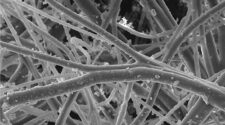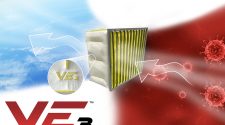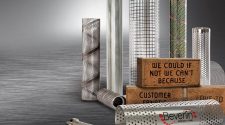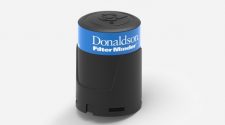Environmental concerns today often revolve around the outdoor environment – whether it be greenhouse gas emissions and climate change, water security and scarcity, waste disposal and management, and the list goes on. However, the indoor environment is an area where, arguably, there should be more concern, particularly when it comes to air quality.
According to the U.S. Environmental Protection Agency, the average American spends in excess of 90 percent of their time indoors. Yet, while there has been a lot of publicity around air quality issues in the outdoor environment, there has not been as much attention paid to air quality indoors, especially in non-industrial/non-manufacturing settings.
A time for concern
It’s hard to pinpoint a specific reason why indoor air quality has not yet risen to a level of concern that matches the potential health threat it poses. Most likely, there are a number of factors involved, from perception to awareness to conflicts of interest, etc.
Certainly, the average person can see the exhaust emanating from a vehicle tailpipe or soot rising from a smokestack or smog lingering in the sky, but these visual indicators of air pollution do not translate to an office building or a residential home. Likewise, the bottom-line impacts of poor air quality in an industrial process or manufacturing environment – such as equipment downtime, contaminated products, employee health and safety violations – aren’t prevalent in an office or residential setting. And the businesses who pay the energy bills often lease the office space they occupy, which means they are not in control of the decision making when it comes to air filtration technology, which further complicates matters.
However, regardless of the setting, indoor air quality is an issue the filtration industry is increasingly focused on as the range of pollutants and seriousness of the health implications become more widely understood.
Historical perspective
Though Indoor Air Quality (IAQ) is a relatively new phrase in the air filtration lexicon, the concept can be dated back many centuries in the past. In 1631, for example, King Charles I of England established a law mandating that ceilings in houses must be 10-feet tall or higher and windows must be higher than their width to allow for natural ventilation. The Romans of 3rd century BC developed heating systems by combining ventilation with combustion to heat public baths and, subsequently, larger buildings.1
In the 1800s, ventilation was recognized as an important method for ensuring hygiene in the damp buildings of the time. And in 1934, Owens Corning developed the first glass fiber disposable filter to protect the earliest iterations of ventilating and air conditioning systems from particulate damage.2
In 1982, the World Health Organization, held a meeting in Nördlingen, Germany, to discuss the impacts and health effects associated with exposure to indoor air pollutants. And this meeting, it could be said, leads to the modern age of what is known today as Indoor Air Quality or IAQ.
It is important to note that air quality in indoor environments has two primary concerns – one involves equipment, processes and end products and the other involves human health. According to Rahul Bharadwaj, Ph.D., senior applications engineering manager for Lydall Performance Materials, when considering air quality from an HVAC perspective, the first phase of development primarily focused on protecting HVAC equipment and minimizing downtime. He said the next phase of air quality development focused on protecting downstream assets in the process. For example, consider the use of HEPA filters to provide clean air to protect process equipment and ensure the quality of end products in applications such medical device, pharmaceutical and semiconductor manufacturing. Dr. Bharadwaj said the emphasis on human health from an HVAC perspective is a more recent development and one where improvement is needed.
In 1991, the Commission of the European Communities’ Directorate General for Science, Research and Development Joint Research Centre published research that highlighted the effects of indoor air pollution on various human health systems. In its report, the Directorate General said, “Many chemicals encountered in indoor air are known or suspected to cause sensory irritation or stimulation. These, in turn, may give rise to a sense of discomfort and other symptoms commonly reported in so-called ‘sick’ buildings.” Likewise, the report noted that “complex mixtures of organic chemicals in indoor air also have the potential to invoke subtle effects on the central and peripheral nervous system, leading to changes in behavior and performance.”3
More recently, there have been a number of studies linking indoor air pollution to a range of human health effects. John Spengler, Akira Yamaguchi Professor of Environmental Health and Human Habitation, in the Department of Environmental Health at Harvard University, has been a leading researcher in the area of indoor air pollutants. Spengler’s program, as well as others, has conducted research that has shown indoor concentrations of common pollutants can reach levels many times greater than outdoor levels. For example, NO2 levels in homes with unvented gas cooking might vary between 20 ppb and 100 ppb. The presence of molds and mildew has been associated with substantial increases in upper and lower respiratory symptoms, while volatile components in gasoline can be six to 10 times higher inside a passenger vehicle during rush hour traffic than values measured at standard urban monitoring sites.4
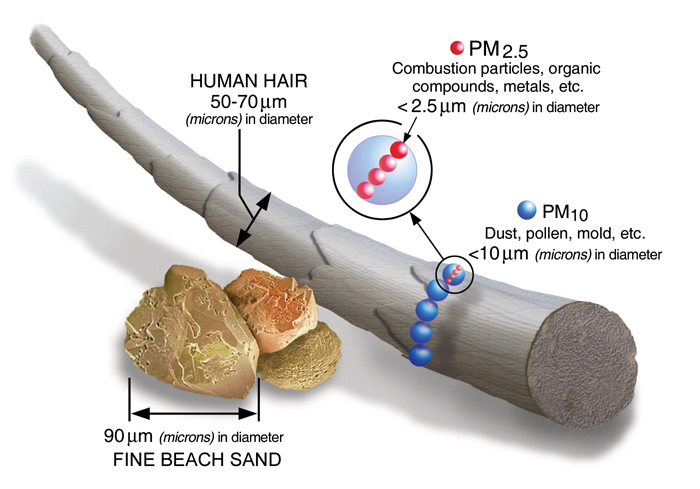
Current state of affairs
Current standards for measuring air quality place a heavy emphasis on PM2.5, or particulate matter 2.5, which refers to particles or droplets in the air that are two and one half microns or less in diameter. There are about 25,000 microns in an inch. The widths of the larger particles in the PM2.5 size range would be about 30 times smaller than that of a human hair. The smaller particles are so small that several thousand of them could fit on the period at the end of this sentence.5
PM2.5 is important because studies have shown that particles 2.5 microns or smaller are particularly dangerous to human health and, in some cases, can be absorbed into the bloodstream and penetrate the lungs, heart and brain.
Air filter efficiency ratings today range from PM1 (<1 μm diameter) to PM10 (<10 μm diameter). From a filtration perspective, there is some debate about the potential danger represented by particles smaller than 0.3 microns, as 0.3 microns is very close to what is commonly referred to as the Most Penetrating Particle Size (MPPS) for HEPA filter media.
Thad Ptak, director of Air Purification Technology at AO Smith Corporation, said the concept of 0.3 microns as the MPPS dates back to the Manhattan Project in the 1950s, when high-efficiency filters were supplied to the U.S. Atomic Energy Commission to confine airborne radioactive particles during nuclear testing. However, he said the MPPS differs depending on the type of filter media and filtration parameters, with the MPPS for high-efficiency glass media in the range of 0.1-0.3 microns, and the MPPS for electrostatic filtration media much smaller in the range of 40-50 nanometers.
You could live without food for days, without water for some days, but without air you would not make it more than a matter of minutes.
Dr. Bharadwaj said there is not enough emphasis on particles below 0.3 microns, with the standards coming out of the American Society of Heating, Refrigeration and Air-Conditioning Engineers (ASHRAE) and the International Standards Organization (ISO) based on the concept of 0.3 microns as the MPPS. “Maybe when the next generation of standards are developed, that is where we will begin to address particles below 0.3 microns,” said Dr. Bharadwaj.
Beyond particulate matter, gaseous contaminants, such as volatile organic compounds (VOCs) and carbon dioxide (CO2) are also a key area of concern for IAQ. Researchers from Harvard’s Center for Health and the Global Environment recently issued findings from a study funded by United Technologies on how green buildings affect health and cognitive function. As the basis of the study, 24 participants spent six full work days in an environmentally controlled simulated office environment. Participants were exposed to Conventional Ventilation (~500 μg/m3) volatile organic compound (VOC) levels and 20 cfm outdoor air per person), Green Ventilation (VOC levels reduced to approximately 50 μg/m3 and 20 cfm outdoor air per person), and Enhanced Green Ventilation (VOC levels reduced to approximately 50 μg/m3 and 40 cfm outdoor air per person). After the exposure period, participants were given a blind test for cognitive function. Results showed that, on average, those exposed to Green Ventilation scored 61 percent higher than those exposed to Conventional Ventilation, with those exposed to Enhanced Green Ventilation scoring 101 percent higher than Conventional Ventilation.6
Michael Clark, division president for the High-Efficiency and Specialty Filtration division of Hollingsworth & Vose, said improved ventilation systems and practices for residential and office buildings would help address some of the concerns over VOCs and CO2. However, he said more attention needs to be paid to the source of such contaminants.
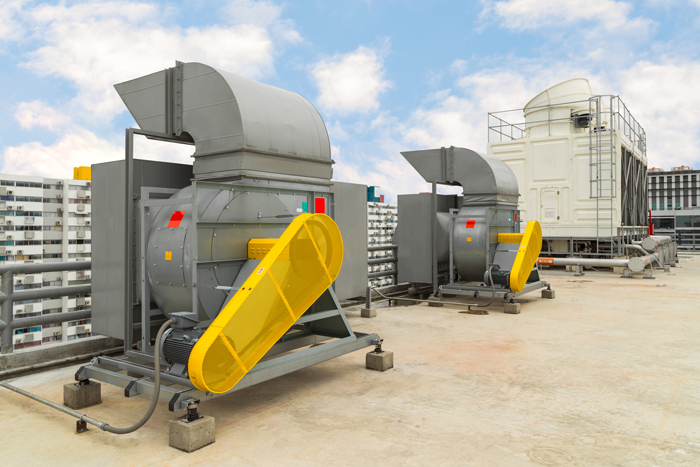
According to Clark, the average home owner or office worker does not fully understand how prevalent VOCs are in the indoor environment. With such common sources as building materials, carpet, home furnishings, paints and lacquers, and consumer products like household cleaners, VOCs have proven to be consistently higher indoors (up to 10 times) than outdoors. Likewise, Clark said most people do not typically understand the importance of proper ventilation in mitigating the potential dangers of VOCs, which have been linked to a wide range of adverse health effects, including sensory irritation, respiratory symptoms, cognitive dysfunction (as detailed above), and cancer.7
Biological contaminants also have an impact on indoor air quality. According to the Berkeley Lab’s Indoor Environment Group, indoor dampness or mold in homes, determined visually or via mold odor, is associated with increases in asthma exacerbation, cough, wheeze, upper respiratory symptoms, asthma development, shortness of breath, respiratory infections, bronchitis, allergic rhinitis, and eczema. The Berkeley Lab conducted meta-analyses of published literature, which showed 30 percent to 70 percent increases in the prevalence rates of these adverse health effects in homes with dampness and mold. Dampness and mold in work places and schools have also been associated with increased respiratory health effects. However, the specific agents, e.g., molds, bacteria, or organic chemicals, causing the health effects associated with dampness and mold are uncertain.8
A big challenge
“Filters used in commercial settings, for example in a hospital or in a pharmaceutical or food and beverage environment, demand a certain level of [air quality],” said Dr. Bharadwaj. “They are forced to maintain [air quality] because it’s a risk to their business. However, the awareness by the common person about the need for IAQ is not there.”
As a result, residential and office buildings are among the more challenging and potentially dangerous areas from an indoor air quality perspective and one where there is, arguably, the need for the most improvement.
The problem with air quality in residential and office buildings is due, in part, to antiquated HVAC technology. Despite rising concerns about indoor air quality, the primary function of residential and office HVAC systems remains cooling and heating, with air quality and filtration being secondary. For example, most HVAC systems do not adjust air flow based on the load of the filter, resulting in poor filtration efficiency and ventilation, both of which adversely affect the quality of air in an indoor environment.
Another challenge with HVAC systems for residential and office scenarios is that many contaminants are more likely to encounter a human before they encounter the HVAC system. “Whenever you open a door or a window in your home, you introduce new contaminants, which can settle on furniture, carpet and curtains,” said Dr. Bharadwaj. “The HVAC system is only as good as the air that is circulating; you can’t really scrape particles from walls and furniture. If those particles become airborne, they are a potential threat.” Likewise, older homes present a variety of infiltration points for contaminants from the external environment to enter the indoor environment on an ongoing basis.
Eugene Beck, executive vice president of sales & marketing for Rensa Filtration, said there is significant work being done in the area of standards for ventilation of office and residential spaces. “Controlling the quality of air in built spaces has a dramatic effect on length and quality of life,” said Beck. “Most of the major ventilation standards, such as ASHRAE 90.1 [Energy Standard for Buildings Except Low-Rise Buildings], 62.1 [Ventilation for Acceptable Indoor Air Quality] and others, have begun adopting acceptable levels based on research. They are also recommending methods to achieve these levels based on existing knowledge.”
At the same time, Beck said, “Air filters continue to increase in particulate removal efficiency, while maintaining low resistance to air flow, thus improving air quality without excessive energy consumption and the associated costs. LEED and other building awareness projects have brought high-efficiency air filtration into the mainstream.”
The LEED program (Leadership in Energy and Environmental Design), which is sponsored by the U.S. Green Building Council, addresses indoor air quality as part of its Indoor Environmental Quality requirements for certification. However, the LEED program does not mandate a certainly level of indoor air quality. Rather, its baseline requirement for certification focuses on ventilation and monitoring air quality per the requirements of existing international standards. The LEED program does offer additional credits for meeting certain baselines for contaminant levels and implementing enhanced particle filtration or air-cleaning systems, but these credits are not required to receive certification.
Regulatory watch
While there have been some regulatory efforts around indoor air quality in Asia and Europe, IAQ, particularly for residential and office buildings, has not received much regulatory attention in the United States. “We don’t have any legislation on IAQ or clean air,” said Dr. Bharadwaj. “Nothing is happening on the legislative level. We breathe 15 times more air than water and food consumed combined. Food and water is legislated, but there is nothing for air. You could live without food for days, without water for some days, but without air you would not make it more than a matter of minutes.”
In the U.S., Dr. Bharadwaj said California is leading the way on IAQ, as it has legislation in place mandating that all HVAC filters sold in California show efficiency ratings: E1 (very fine particles in the 0.3 to 1.0 micrometer range), E2 (fine particles in the 1.0 to 3.0 micrometer range), or E3 (coarse particles in the 3.0 to 10.0 micrometer range). Yet still, this is only a requirement for filter manufacturers to state filter efficiency, it is not legislation mandating a certain level of indoor air quality. From a VOC perspective, Dr. Bharadwaj said California’s Prop 65, which requires product manufacturers to include a hazardous label on any product that contains chemicals known to cause cancer, birth defects or reproductive harm, also provides some level of transparency.
Beyond California, there does not appear to be much appetite for regulatory initiatives around IAQ. On the indoor air quality section of its website, the U.S. EPA states, “EPA does not regulate indoor air, but we do offer assistance in protecting your indoor air quality.” Likewise, on the VOC section of the EPA’s IAQ website, it states, “No federally enforceable standards have been set for VOCs in non-industrial settings.”
Standards groups, such as ASHRAE and ISO, have taken a proactive role on indoor air quality. And while there is occasional debate between ASHRAE and ISO as they develop standards that, in some cases, conflict and/or overlap, they are sponsoring research and developing guidelines with the aim of enabling progress on the IAQ front. ISO has recently published a series of standards, ISO 16890:2016 parts 1 thorough 4, which aim to help users of air filtration technologies to judge filtration performance based on particle removal in terms of PM1, PM2.5, and PM10 efficiencies.
“The ISO 16890 results are a comparison of filters under laboratory testing using a standard protocol, but the method of converting the test data to a PM efficiency can be used show how a filter will perform in local outdoor air conditions at the user’s location,” said Don Thornburg, R&D manager for Camfil. “This allows a user the ability to make a more educated choice for their filtration needs and is a much needed step in the right direction for IAQ.”
Ptak said an important issue with the current ISO standard is that it relies on calculations for PM efficiency that are based on assumptions regarding size distribution of ambient aerosol and particle density, and it does not address filter efficiency below 0.3 micons. As a result of these assumptions, he said the calculated PM efficiency can significantly overestimate filter performance in real-world applications. “Filters are not exposed only to ambient air – ambient and indoor particle sources can exhibit different morphology, density and size distribution,” said Ptak.
On the corporate side, Daikin, a global manufacturer of HVAC systems, has been actively engaged with U.S. government officials in Washington DC to determine what, if anything, can be done from a legislative perspective to ensure the quality of indoor air. And INDA, Association of the Nonwoven Fabrics Industry, has held several meetings with its members and IAQ thought leaders to determine how it might add value around indoor air quality.*
New technology
There are some interesting technology developments around the concept of air quality. For example, in the central Chinese city of Xi’an researchers have developed a skyscraper-sized air filter. The filtration tower is approximately 200 feet tall, and it targets PM2.5 contaminants. Early results from this research program, which is an effort led by Cao Junji, Ph.D., a chemist at the Chinese Academy of Sciences, and David Pui, Ph.D., professor of Mechanical Engineering at the University of Minnesota, among others, have shown enough promise that similar filtration towers are being considered in a number of additional locations throughout China.
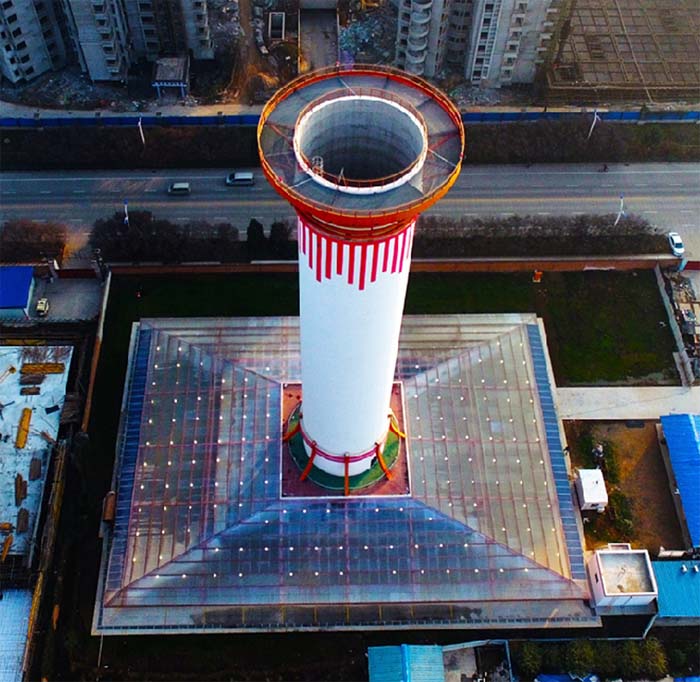
On a smaller, more indoor-air focused scale, the emergence of indoor air cleaners and smart ventilation systems offer promising development.
Indoor air cleaners are particularly popular in countries like China and India where residential HVAC is not nearly as prominent as it is in the U.S. or Europe. There are a number of air purification technologies on the market, utilizing a variety of methods to address particulate matter and VOCs.
According to Ptak, portable air cleaners offer the most sophisticated capability available today for the removal of particulates and gases in the indoor environment. Currently available portable air filters utilize methods such as high-efficiency particulate filtration, electrostatic precipitation, photocatalysis, and room-temperature catalysis to remove airborne particles, bioaerosols, VOCs and other gaseous pollutants. Portable air filters also employ sensors to measure particulate, formaldehyde and VOC levels in the actual environment and control their operation based on these real-world measurements. Ptak said portable air cleaners offer a vision of a future where users can benefit from filtration on demand.
Fresh air ventilators actively control CO2 and VOCs by exchanging fresh air and exhaust air streams as appropriate based on air quality levels. Build Equinox, for example, manufactures a smart ventilation system called CERV, which features online control and monitoring that allows users to check air quality and change settings and setpoints from anywhere using a mobile device. The CERV system uses a high-efficiency heat pump to exchange energy between incoming supply and outgoing exhaust air.
In the transportation space, cabin air filtration was first introduced in the 1930s, but it did not gain significant traction until the 1990s. Recently, Tesla introduced a HEPA cabin air filter for its automobiles with a feature called Bioweapon Defense Mode. According to Tesla, the filter is 10 times larger than a normal car filter, 100 times more efficient than traditional premium automotive cabin air filters, and capable of removing 99.97 percent of fine particulate matter, bacteria, viruses, pollen, and mold spores. Inspired by filtration systems used in hospitals and cleanrooms, the Tesla HEPA filter and Bioweapon Defense Mode system is capable of purifying the air within the vehicle within a matter of minutes.
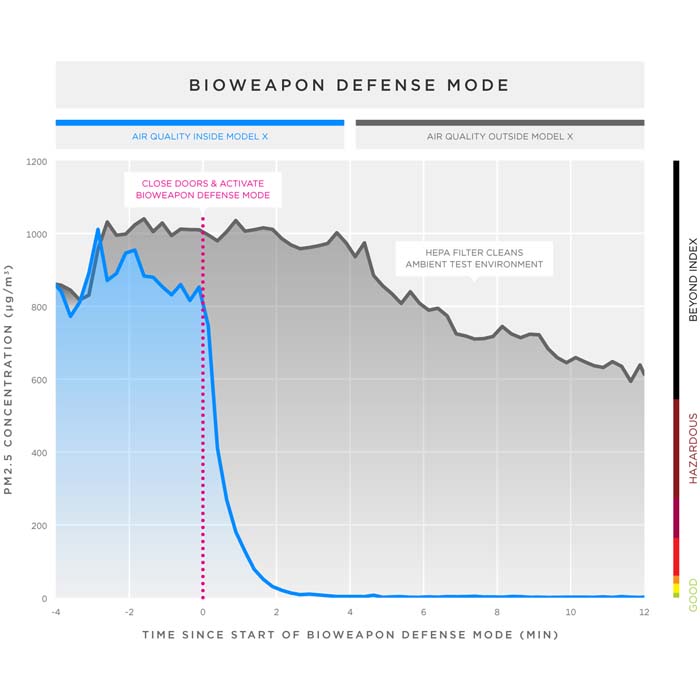
Clark said the cabin air filter market in general is an area of opportunity for IAQ technology. The segment has shown nearly double-digit growth rates in recent years, which figure to continue to increase as awareness of the need for cabin air filter replacement rises among car owners. Likewise, Clark said technologies, such as combi air filters, which are capable of filtering particulates, VOCs and molecular contaminants, will attract increased attention and foster new development as the need for cabin air filtration becomes more important and more widely known.
Energy matters
Providing clean air is an energy-intensive endeavor, as it requires the movement of air across a filter media, which in some cases may be caked with particulate matter. Inefficiency in filtration systems also has a direct relationship to air pollution, as the more energy required to operate filtration systems, the more air pollution that is introduced into the environment in general in the form of emissions. And today’s HVAC systems tend to be pretty inefficient.
In fact, Clark said up to 10 percent of global energy consumption can be attributed to pushing air across HVAC filters. Likewise, Dr. Bharadwaj said most HVAC systems run at an efficiency in the range of 40-50 percent.
“The energy a motor/blower consumes over the life of a filter has significant impact on the total cost of filtration,” said Beck. “Quite often the filter is a minor element in the overall [efficiency of the system], dependent on how often the system is running.”
ASHRAE is currently working on a guideline through Project Committee 35 [Method for Determining the Energy Consumption Caused by Air-Cleaning and Filtration Devices], to provide a common methodology for determining energy consumption created by the introduction of air cleaning and filtration devices into an air stream. The guideline, which is expected to be released in 2022, applies to air cleaning devices for removing particulate and gas phase contaminant in general ventilation systems. It does not apply to UV-C devices or electrically powered general ventilation air cleaning devices.
Ptak said energy is one of the key challenges associated with filtration via today’s HVAC systems, as there is a direct tradeoff between the HVAC systems energy requirement and its filtration efficiency, not only for particulate matter, but also for gaseous pollutants. Today’s HVAC systems cannot filter airborne pollution if the fan is not running, and if the fan is running, the HVAC system is consuming more energy. And as the system runs and the filter collects more particulate matter, its pressure drop increases, which further increases the energy consumption or reduces flow rate, depending on the fan type. To address this issue, Ptak said the standard HVAC system will likely require some design modification to support higher efficiency filters with higher pressure drop.
The way forward
There are many challenges associated with indoor air quality today, particularly as it pertains to human health in office and residential settings. Clark said he believes all of these challenges will ultimately be overcome as more transparency is provided to the people who occupy such spaces.
“Today we recommend a filtration efficiency, but [IAQ] has to do with a system more than just the filter itself,” said Clark. “At the end of the day, all of [the] standards don’t matter, because what matters is what is happening in your actual environment.”
Clark said the way air filtration is handled today is similar to recommending that everybody in the United States set their thermostat at level four. “That would be insufficient because it would be too hot in the south and too cool in the north,” he said. “That’s sort of what we’re doing in filtration.”
With modern sensor technology, Clark said it is now possible to provide people with a view of what is actually happening in their environment. The thermostat of the future will have an IAQ sensor that will show people where their actual air quality is in terms of PM1.0, PM2.5, PM10, VOCs, etc.
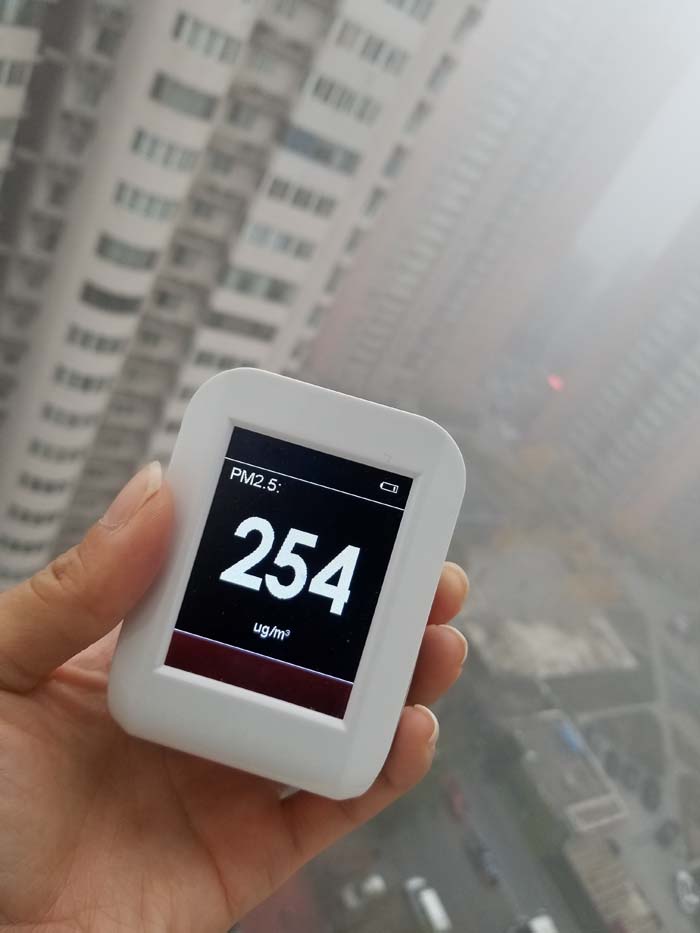
“The cost of sensors is coming down, so we will see technology start to limit the scope of standards,” said Clark. “Standards will have a role to play to give you a sense for the level of efficiency, but sensors will give people a true picture of IAQ in their actual environment, which will drive technology development.”
Dr. Bharadwaj said he sees the HVAC system itself as a key stumbling block to IAQ, particularly in residential systems. He said, IAQ in a residential home is hard to model because there are so many variables. “The answer is probably not there today,” he said. “We know the problems, we don’t necessarily have a perfect solution.”
Ultimately, the challenge of IAQ is one that will likely pivot on high-technology. Whereas the standard HVAC system of today is not well suited to efficiently ensure the quality of air in the indoor environment because it is designed for heating and cooling first and foremost, sensing technology offers hope for improvement on the filtration front.
Portable indoor air cleaners are already leveraging sophisticated algorithms and sensing technology to provide users a clear picture of the quality of their air. The filtration technology contained within these systems is capable of removing many harmful contaminants. So the technology is available to improve the quality of indoor air; the question is … When will the public, government and/or business community demand the scaling of such technology for a more holistic IAQ approach?
References
- “Why We Ventilate Our Houses – A Historical Look,” N. Matson, M Sherman, Lawrence Berkley National Laboratory, inive.org/members_area/medias/pdf/Inive%5CLBL%5CLBNL-55107.pdf.
- “Glasfloss Industries: Making History Since 1936,” Glasfloss Industries, glasfloss.com/history.
- “Report No. 10: Effects if Indoor Air Pollution on Human Health,” Commission of the European Communities Directorate General for Science, Research and Development, 1991.
- “John Spengler – Akira Yamaguchi Professor of Environmental Health and Human Habitation,” Harvard T.H. Chan School of Public Health, hsph.harvard.edu/john-spengler/.
- “Fine Particle (PM 2.5) Questions and Answers,” New York State Department of Health, health.ny.gov/environmental/indoors/air/pmq_a.htm.
- “The impact of green buildings on cognitive function,” Harvard T.H. Chan School of Public Health’s Center for Health and the Global Environment, harvard.edu/tools-resources/research-highlight/impact-green-buildings-cognitive-function.
- “Volatile Organic Compounds,” Indoor Air Quality Scientific Findings Resource Bank, Berkeley Lab, lbl.gov/voc-summary.
- “Dampness-Related Health Risks,” Indoor Air Quality Scientific Findings Resource Bank, Berkeley Lab, lbl.gov/dampness-risks.
- “Associations of Cognitive Function Scores with Carbon Dioxide, Ventilation, and Volatile Organic Compound Exposures in Office Workers: A Controlled Exposure Study of Green and Conventional Office Environments,” Joseph G. Allen,1 Piers MacNaughton,1 Usha Satish,2 Suresh Santanam,3 Jose Vallarino,1 and John D. Spengler1, Environmental Health Perspectives, June 2016.
- “Indoor Air Quality: What are the trends in indoor air quality and their effects on human health?” U.S. Environmental Protection Agency, epa.gov/report-environment/indoor-air-quality.
* International Filtration News is owned by INDA, Association of the Nonwoven Fabrics Industry.



